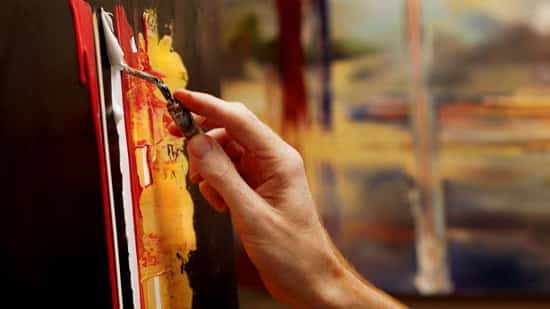
On Painting, Procrastination and What Might Have Been
“For of all sad word of tongue or pen, the saddest are these. “It might have been.”
John Greenleaf Whittier
I always feel so sad when I read this quote, “It might have been…”
What a waste.
So many aspiring artists come to me with a real passion for learning how to paint and ask me where they should start?
Not knowing where to begin or muddling along on your own can be really slow progress and eventually the paints can spend more time in your box than on your canvas.
Your dreams of becoming a painter get lost.
But you were so close!
If you came to my studio with the question ‘I have a week to learn how to paint, what do I need to know?’
I’d strip the learning process down to basics, the fewest brushes, a few key colours and an essential introduction to the wide properties of acrylics.
Materials and set up, colour mixing and pigment choice, brush handling and palette knife techniques and gels and mediums.
Then we’d get painting using methods that achieve great results even if you’ve got no artistic training.
Why Acrylics?
Acrylics can be used in thin transparent washes like water colours or in a thicker more opaque form like oil paint.
They dry quickly and can be diluted and cleaned with water making them simple to use, odourless and accessible for the beginner.
So when are you coming round, right?
If you’ve never even picked up a pencil I’d always usually recommend learning how to draw. Which I know sounds a little deflating … you want to learn how to paint!
However, learning to draw sets you so far ahead, so quickly, it really is the most ‘bang for your buck’ for a set of principles that don’t change.
But what if the allure of colour is too much to resist and you want to get straight into painting?
Well, I’ve been working on a new course just for you…
The Foundations of a Good Painter
Picasso’s father was an art teacher.
Young Picasso had some great one-on-one artistic training in drawing and painting from an early age.
He progressed quickly.
By the time he was 15, Picasso’s father stopped painting as he felt his son had surpassed him.
Here’s a painting by the then 15-year-old Picasso.
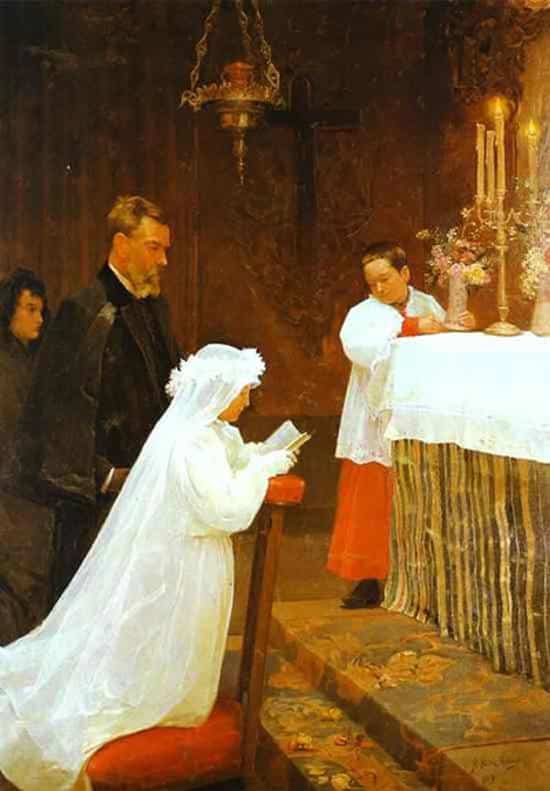
Pablo Picasso, aged 15, La première communion (First Communion) 1896
You wouldn’t have predicted that 30 years later his paintings would look more like this:
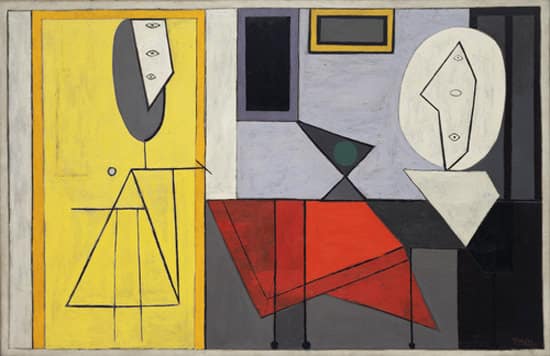
Pablo Picasso, aged 47, The Studio (1927 -1928)
But you can start to see where his feeling for composition and colour balance has come from.
Both pictures have similar colour palettes of warm yellow and then a strong bright red.
There is a strong contrast with black and white, and a dialogue between the characters in both paintings.
All abstract paintings have been ‘abstracted’ from reality.
If you want to paint impressionistically or with a more abstract approach, it’s best to start with observation skills.
You can then grow from a solid foundation.
The Talent Myth
Sometimes it can feel like everyone else is a naturally gifted painter.
You can go to a ‘beginners art class’ and everyone seems to know so much already.
You’d love to emulate other students confidence and success but you don’t know how.
Every time you give it a go, there’s a little something holding you back.
It could be the fear of the unknown, a lack of time or an inner feeling that ‘I’m not talented enough’
Maybe you’ve followed some tutorials, read some books but still have some loose ends in your full understanding of how painting works.
Your first attempts?…not so amazing.
But I know that taking a simple approach can give you repeated consistent results, even if you’re an utter beginner.
Painting should be a simple process that gives you a great sense of calm, achievement and pleasure.
Without a basic understanding of the fundamentals, you can waste hours at your easel, get disheartened and amass a healthy collection of brand new paint tubes…with no brand new paintings.
The ‘I’m not talented’ conditioning can hold many people back for years before taking that first jump into painting, but artistic talent is a myth.
Painting is a skill that can be learnt, just like riding a bike.
The first stage in your transformation is to have a look at your mindset.
Do you have a growth mindset?
This could seem a strange question to ask when learning about painting, but your mindset before you begin any new creative endeavour can be the difference between failure and success.
Many admirers of paintings will often comment ‘you are so lucky to be talented’, and unwittingly place themselves within the ‘untalented’ bucket. Keeping themselves on the sideline as a viewer, rather than a doer.
It doesn’t have to be this way.
Carol S. Dweck, a Professor of Psychology at Stanford University, claims that people can be placed into two different mindsets.
- A fixed mindset
- A growth mindset
You can have a fixed mindset in some areas and a growth mindset in regard to others.
But we’re interested in your mindset towards learning creative skills.
Those who have a ‘fixed mindset’ to painting, believe that success is based on an innate talent, assuming that creative ability is static and can’t be changed in any meaningful way.
These thoughts can stop you in your development as an artist before you even buy your first tube of paint.
We want to develop a growth mindset in regard to your artistic skills.
A growth mindset thrives on challenges and believes that success is reliant upon improving.
When you learn to paint, there are going to be drawings that look wonky, colour mixes that go wrong and areas that need repainting.
These shouldn’t be seen as failures but learning curves!
“In this mindset, the hand you’re dealt is just the starting point for development. This growth mindset is based on the belief that your basic qualities are things you can cultivate through your efforts. Although people may differ in every which way — in their initial talents and aptitudes, interests, or temperaments — everyone can change and grow through application and experience.
― Professor Carol S. Dweck, Mindset: The New Psychology of Success
This is a pretty compelling thought, right?
That to become ‘talented’ as a painter is within your control.
But before you feel the urge to tidy your studio, let me introduce you to the Prince of Procrastination.
Overcoming procrastination
If there was an award for ‘best procrastinator‘ I think I’d win.
I am a master of it.
Let’s take a trip to my days at art school and the dreaded word ‘dissertation’
My 6000 word written dissertation was a lesson in life, fear and extremely high levels of anxiety.
Having had a 3-month time-frame to write it, I eventually sat down every day of the last month to write my masterpiece.
Vanessa often popped her head in my room to see a mass of paper around the floor, piles of books with labels sticking out of them and a flurry of activity, I was so busy I didn’t have time for a chat – I was writing…
She must have thought I was some kind of genius of prose…she was wrong.
At day 88 of the 90-day deadline, my word count was precisely 203.
Don’t laugh.
I’d worked extremely hard on that first Introduction.
I ended up writing 5000 words the day before the deadline.
The results?
Handing in a dissertation 2 minutes before the cut-off point, only to find when I received it back, I’d made a spelling mistake on the second line.
But that wasn’t the worse of it.
Just slightly, more importantly, I’d forgotten to include the final page of my conclusion!
The page I was most proud of, that pulled all of my revolutionary thoughts together in one groundbreaking piece of abstract artist thinking…was left under the word processor.
So I can sympathise with any fellow procrastinators who might be having a similar process with their painting production.
I’ve designed this course so each step is ‘procrastination-friendly’
A progressive sequence
My new Absolute Beginners Acrylic Painting Course is designed to give you professional looking paintings with a few key materials in a relatively short space of time when we take the right painting approach.
It’s designed for students who feel inspired to learn how to paint but have little or no training.
The course has a logical progression, from handling a brush, achieving the perfect paint consistency with water, the basics of colour mixing, to how to create depth and texture in your paintings.
It will take you on a journey covering a wide range of techniques from Classical realism to a more modern abstract approach as understanding how to create something realistically to start with, is the foundation of all great artists.
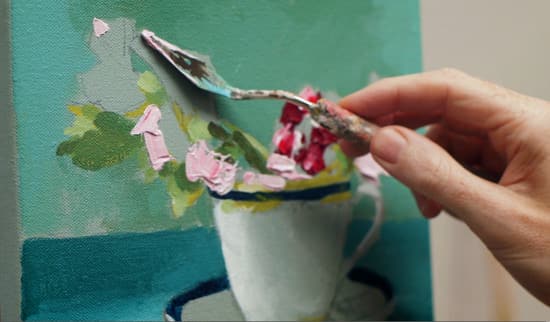
At each stage you might just be using one brush or one new colour, I’ve included my line drawing so you can have a jump start on where to begin and each lesson builds logically and progressively so you have a clear path to follow.
By the end of the course, you will have created 3 different painting studies in 3 different styles, moving from absolute beginner to painting with confidence.
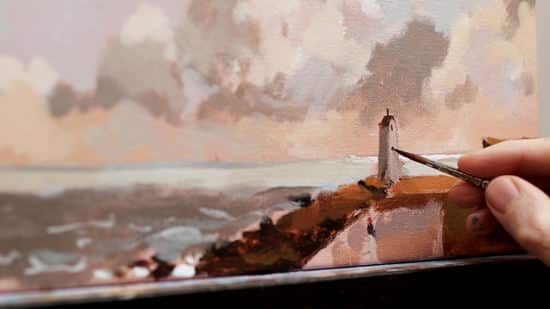
I started this website over 3 years ago with the ambition to help and encourage aspiring artists to face the fear of the white canvas and paint it anyway.
So what are we waiting for! My new Absolute Beginners Acrylic Painting Course is available now.

